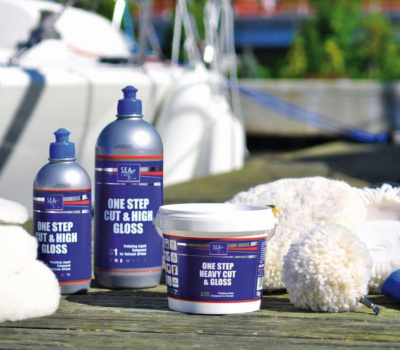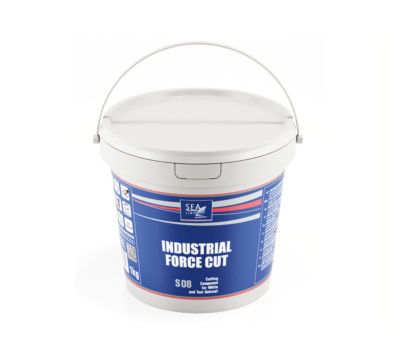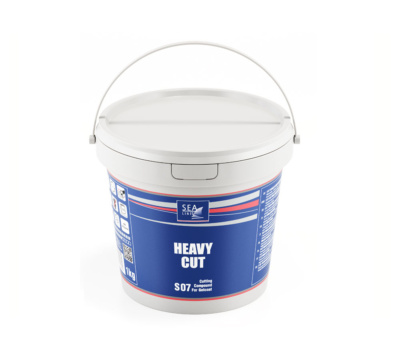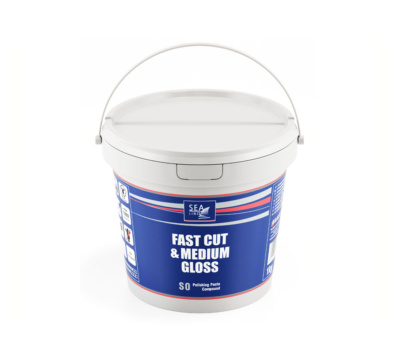S1 SOFT CUT & GLOSS – Polishing paste thanks to its versatility can be used in industrial as well as DIY use.
This is a perfect product for charter companies or private boat owners which have to restore gloss on different type of surfaces. The paste does not contain wax and silicone fillers.
| Weight | Code |
|---|---|
| 500 g | 300005578 |

No silicone
| Surface | gelcoat, polyurethane paints nad varnishes, plexi, polycarbonate | |||
| Function | removing defects from the surface gloss restoring | |||
| Consistency | liquid – creame paste | |||
| UV resistance level | very low | |||
| Surface preparation * | mechanical grinding | manual grinding | ||
| light color | dark color | light color | dark color | |
| gelcoat | P1200 ⇒ | P1500 ⇒ | P1500 ⇒ | P2000 ⇒ |
| polyurethane paint | P1200 ⇒ | P1500 ⇒ | P1500 ⇒ | P2000 ⇒ |
| plexi, polycarbonate | P2000 ⇒ | P2000 ⇒ | P2000 ⇒ | P2000 ⇒ |
| high hardness surfaces | P1500 ⇒ | P2000 ⇒ | P2000 ⇒ | P2000 ⇒ |

Polishing systems meet all stages of production, as well as during repair work, renovations or

Primarily designed for the companies which produce goods or forms made of gelcoat or an

S07 Heavy Cut Sea-Line is specialistic polishing paste with a very high cutting force which

S0 polishing compound Sea-Line is a polishing paste is designed for professionals – manufacturers, shipyards
Sea-Line yacht paints are designed for painting the surface of boats and yachts made of various materials, e.g. laminate, wood or steel. We do not have a certificate of the National Institute of Hygiene, which would allow the use of yacht paint to paint the tank with drinking water.
We do not recommend using universal thinners. The use of a thinner with an unknown composition may result in loss of adhesion, lack of proper flow of paint and varnish defects.